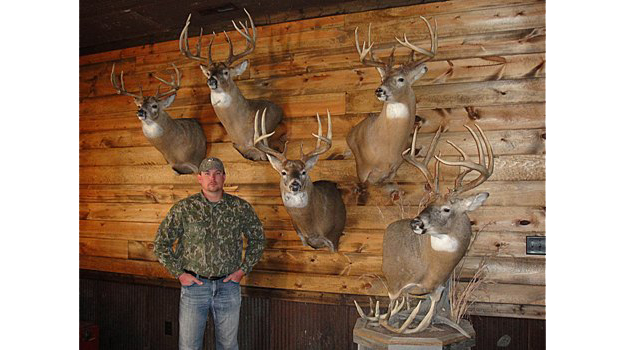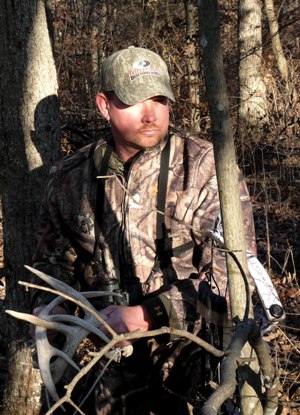How Tommy Nails Hunts Deer in Iowa

Editor’s Note: Tommy Nails of Milton, Iowa, is originally from Corinth, Mississippi, and grew up hunting deer and turkeys in Mississippi. He’s been hunting deer for 30 years. He moved to Iowa about 7 years ago but still travels back and forth to Mississippi during hunting season. After deer hunting Iowa for the first time, his dream was to live there, so he could hunt those big northern deer.
I live in southeast Iowa with its rolling hills in the heart of the agricultural belt. Corn and soybeans are king, but you'll also find alfalfa, winter wheat and many row crops on farms. If there is a 400-acre farm, there only may be 10 acres of timber on that entire 400 acres. We hunt those small blocks of timber, fence rows between crop fields and inside corners of crop fields, as well as ditch banks and pinch points. When crops are harvested, a tremendous amount of grain is still left in the field on which the deer can feed. I also plant a few small fields with different varieties of Mossy Oak BioLogic clover.
One of the phenomenal things about my moving to Iowa is that many of my Mississippi friends want to come up here and hunt with me. So, I charge my friends just enough money to help pay for the leases I have on 7,000 acres. Although in Mississippi 7,000 acres is a lot of land to hunt, here in Iowa, less than half the land that I have leased is huntable, and there are numerous crop fields and wide open spaces.
 During bow season, I try and hunt the small timber spots, pinch points, fence rows and ditch banks. But during gun season, I set-up ground blinds on the edges of crop fields. In late gun season, 95 percent of what we’re hunting over with either shotguns or blackpowder rifles is grain fields and soybean fields. In bow season, I’ll hunt travel corridors in the mornings and food sources in the afternoons. Our rut season is from October 21 until the first two weeks in November. During the rut, I try to hunt fence rows and ditch banks that create narrow corridors between two large bedding areas, since the older-age-class bucks will be on the move, looking for estrous does in those bedding areas. I'm basically hunting the places where I see the most does and the most does moving, because the does are what the bucks will be hunting.
During bow season, I try and hunt the small timber spots, pinch points, fence rows and ditch banks. But during gun season, I set-up ground blinds on the edges of crop fields. In late gun season, 95 percent of what we’re hunting over with either shotguns or blackpowder rifles is grain fields and soybean fields. In bow season, I’ll hunt travel corridors in the mornings and food sources in the afternoons. Our rut season is from October 21 until the first two weeks in November. During the rut, I try to hunt fence rows and ditch banks that create narrow corridors between two large bedding areas, since the older-age-class bucks will be on the move, looking for estrous does in those bedding areas. I'm basically hunting the places where I see the most does and the most does moving, because the does are what the bucks will be hunting.
Right now, during the end of December, and until the first part of January, 2016, deer will be bedding close to the corn and bean fields and primarily feeding at night. I don’t like to hunt in the mornings, because I'm concerned that I’ll spook the deer I'm trying to take as they come to the bedding areas, after feeding at night. So, only in the afternoons, we hunt on the edges of corn fields and bean fields out of ground blinds.
Another reason I don’t like to hunt in the mornings at that time is because during gun season, many of the locals put on deer drives in the mornings and take a break at lunch. Then I can put my hunters out on the edges of the fields. These hunters will drive again in the afternoon. I feel the morning deer drives push bucks onto our property. So, in the afternoons, we have bucks on our property we can hunt that have been pushed off the areas being driven in the mornings. Once the drives start in the afternoons, we get even more bucks pushed on to the property we hunt. I try to put my hunters 100 to 120 yards away from where I think the deer will come into the grain fields. This way, there's less chance of spooking the bucks we want to try and take.
Up here in Iowa, a buck that will score 140 - 150 inches is pretty much average. Since I've lived here, the biggest deer I've taken scored 190 inches.
Tomorrow: How to Use Deer Drives to Take More Deer



























